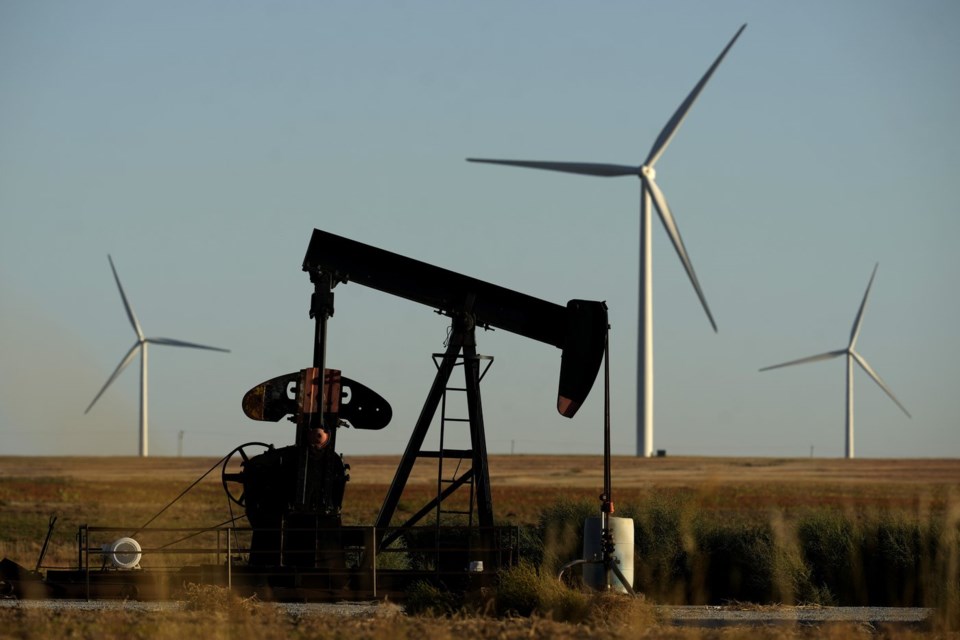An increasing shift toward electric vehicles globally, especially in China, is poised to disrupt the global oil market, according to a report released Wednesday by the International Energy Agency.
In recent years, China has accounted for most of the growth in oil demand and planet-heating emissions, but electric vehicles now make up 40% of new sales of cars there, and 20% of sales globally, putting major oil and gas producers “in a bind.”
The IEA World Energy Outlook 2024 outlines a future where EV adoption continues to gain momentum, potentially displacing up to 6 million barrels per day of oil demand by 2030. The agency said based on current trends and policies and the availability of materials, EV will reach 50% of global car sales in 2030.
China already accounts for half the world’s electric cars on the road. By 2030, it's projected that 70% of new car sales in China will be electric. With its massive additions of new wind and solar power, China is aligned with its target for addressing climate change, seeing emissions peak and begin to decline by the end of the decade.
The clean energy expansion, however, is happening alongside a rise in demand for electricity, including power produced by burning coal, according to the IEA. "This has meant that even as we saw record growth in clean energy installations and additions, emissions kept increasing,” said Lauri Myllyvirta, lead analyst at the think tank Centre for Research on Energy and Clean Air.
Electricity demand is growing even faster than expected, “driven by light industrial consumption, electric mobility, cooling, and data centres and AI,” the report said. The contours of switching heating, vehicles and some industry over to electricity, it said, are beginning to become clear.
Globally, the IEA said that the expansion of wind and solar power alongside the increasing adoption of EVs will ensure a peak in demand for coal, oil and gas within the decade, with carbon emissions also reaching their highest point and ramping downward. Scientists have long warned that the world must sharply cut emissions of greenhouse gases to stave off the worst impacts of climate change.
As China’s rapid switch to electricity plays a significant role in disrupting the oil market, oil companies find they can sell more of their product to India. The IEA projects that India will add nearly 2 million barrels per day of oil to its demand by 2035, potentially offering a lifeline to oil producers looking to offset declining growth in other regions.
The energy agency warned the picture means ″the world is still a long way from a trajectory aligned with its net zero goals,″ because rather than going up for the next several years, global climate pollution must drop each year to preserve a good chance of keeping a climate similar to the one the Earth has now.
The 2015 Paris Agreement aimed to limit global warming to a 1.5 Celsius (2.7 degrees Fahrenheit) increase in average global temperatures compared to the 1800s. But the world is currently on pace to for the average to go up 2.4 degrees Celsius ( 4.32 degrees Fahrenheit) by the end of the century, the report said.
The reports shows “emissions would not drop quickly and only decline slowly” after they hit their highest level, unless action is ramped up quickly, said Bill Hare, CEO of Climate Analytics.
The IEA is an intergovernmental body based in Paris. The World Energy Outlook is published annually and relied on by policymakers and analysts as a source on global energy trends and policy impacts.
___
Associated Press reporters Seth Borenstein in Washington, D.C., and Sibi Arasu in New Delhi contributed to this report.
____
The Associated Press’ climate and environmental coverage receives financial support from multiple private foundations. AP is solely responsible for all content. Find AP’s standards for working with philanthropies, a list of supporters and funded coverage areas at AP.org.
Taiwo Adebayo, The Associated Press


